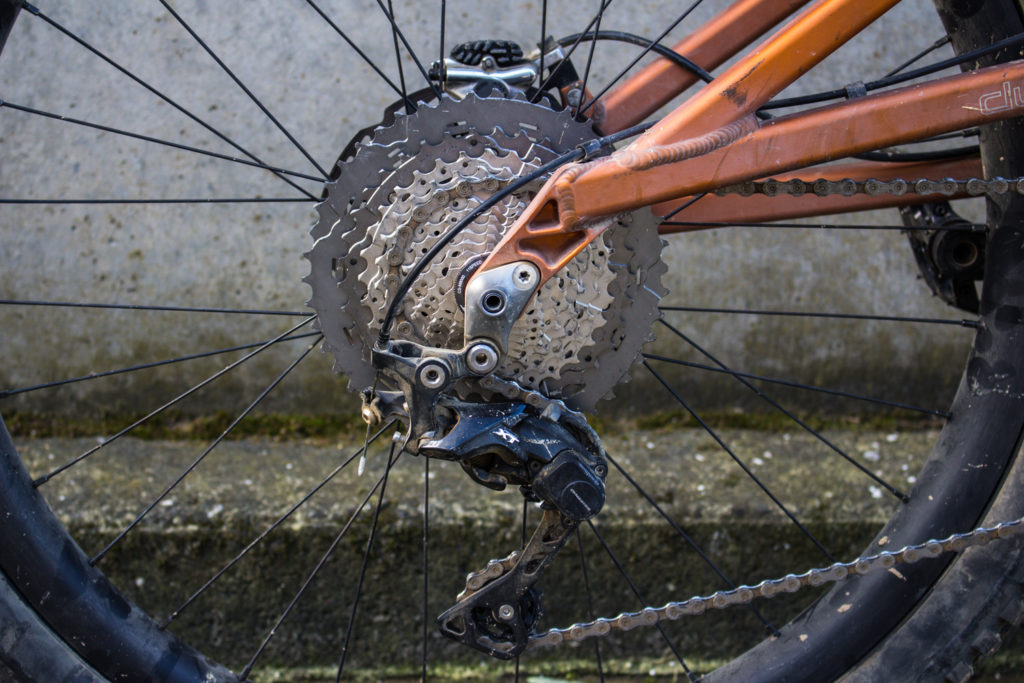 What can you say about something that is somewhat of an unglamourous piece in the puzzle that we call a bicycle, such as a cassette? Every geared bike has one, they vary in the numbers of cogs, and those cogs can vary in the number of teeth on each. They allow you to shift the chain between them and make pedalling easier/harder/optimal. Sounds simple, and so it should be.
What can you say about something that is somewhat of an unglamourous piece in the puzzle that we call a bicycle, such as a cassette? Every geared bike has one, they vary in the numbers of cogs, and those cogs can vary in the number of teeth on each. They allow you to shift the chain between them and make pedalling easier/harder/optimal. Sounds simple, and so it should be.
Of course, modern mountain bikes and the parts making them up are anything but simple these days. There are so many ‘standards’ that the word itself will probably be changed to some new bigger, stiffer, wider word any week now. It’s almost enough to make me want to ride a rigid singlespeed… get a grip man, that’s crazy talk. Sometimes though, it seems that we’re being forced––maybe coerced is a better word––to ‘upgrade’ our gear just to say we have the latest stuff. Conversely, most of the new standards over the last decade at least have made positive changes to the bikes we ride, and the way we ride them. We could make a list as long as this page of the things that have enhanced our ride, but for relevance we’ll concentrate on the drivetrain. There is little doubt that doing away with front derailleurs has made life better for a good number of riders (not all of course, but those people are still catered for). Getting rid of gears may seem counterproductive to the raison d’etre of being able to pedal up steep hills, which is where the new wave of wide-range cassettes and expander cogs comes in. There’s no point in making something worse, which could’ve been the case with 1x drivetrains had there not been the additions of extra cogs and extra teeth. Just when we thought we had enough gears, along come even bigger cogs, making life even better. Or do they?
Conversely, most of the new standards over the last decade at least have made positive changes to the bikes we ride, and the way we ride them. We could make a list as long as this page of the things that have enhanced our ride, but for relevance we’ll concentrate on the drivetrain. There is little doubt that doing away with front derailleurs has made life better for a good number of riders (not all of course, but those people are still catered for). Getting rid of gears may seem counterproductive to the raison d’etre of being able to pedal up steep hills, which is where the new wave of wide-range cassettes and expander cogs comes in. There’s no point in making something worse, which could’ve been the case with 1x drivetrains had there not been the additions of extra cogs and extra teeth. Just when we thought we had enough gears, along come even bigger cogs, making life even better. Or do they?
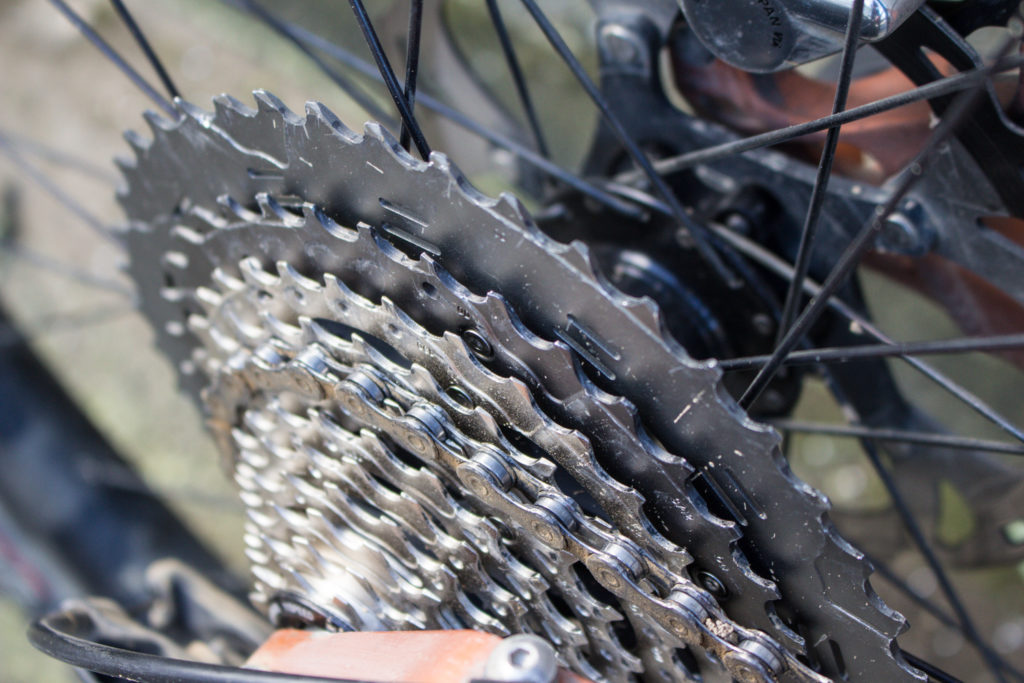 I’d have to say a resounding ‘yes’ when it comes to Shimano’s latest 11-speed cassette. Having run 10-speed with a 42t expander cog until I couldn’t resist 11 speeds any longer, I thought that I’d found the ultimate means to the gearing end. Not that I thought I didn’t need a lower gear; there’s always somewhere you need a lower gear. With the 42t out back, it was most useful to run a 30t or 32t chainring up front to get the desired low end. With the 46t option, I can have the same low end ratio but get a better and higher spread across the remaining ten cogs by running a 34t up front. Makes sense. Strong riders who can run a 36t up front will benefit too from a lower climbing gear.
I’d have to say a resounding ‘yes’ when it comes to Shimano’s latest 11-speed cassette. Having run 10-speed with a 42t expander cog until I couldn’t resist 11 speeds any longer, I thought that I’d found the ultimate means to the gearing end. Not that I thought I didn’t need a lower gear; there’s always somewhere you need a lower gear. With the 42t out back, it was most useful to run a 30t or 32t chainring up front to get the desired low end. With the 46t option, I can have the same low end ratio but get a better and higher spread across the remaining ten cogs by running a 34t up front. Makes sense. Strong riders who can run a 36t up front will benefit too from a lower climbing gear.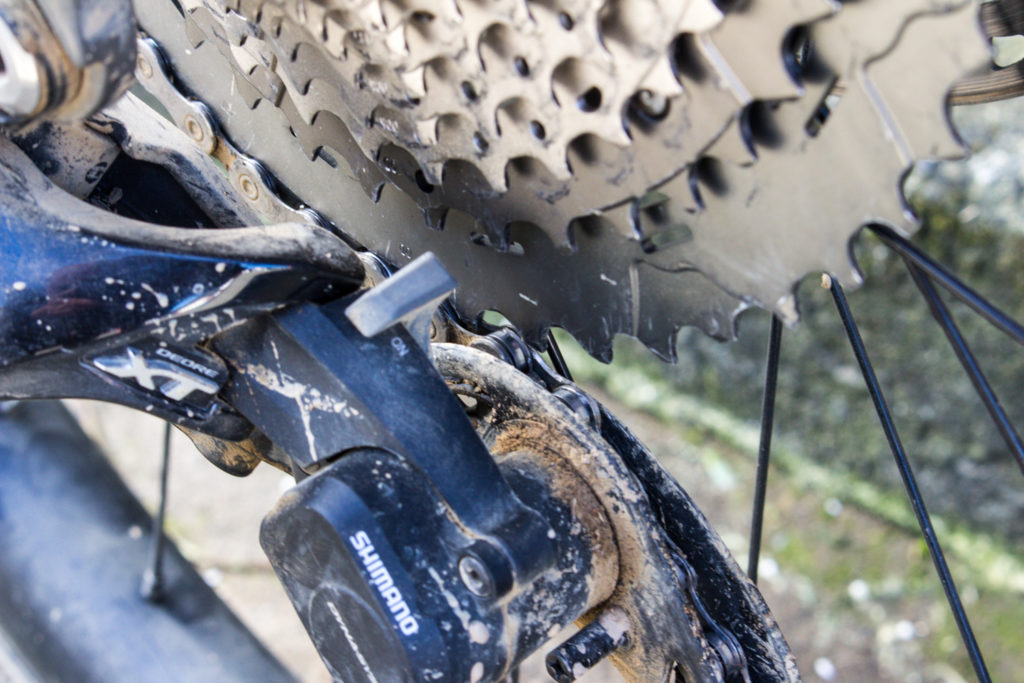 Yes, there are (up to) 50t expanders out there which we also rate highly, and are a great option for people still running 10-speeds and don’t want to fork out for a new cassette and shifter. But this 11-46 is a no-brainer for those already on 11-speed Shimano setups. It certainly saved my ass during the test period, which was punctuated by a lack of fitness and an abundance of laziness over winter, so I found myself in the 46 quite a bit where normally I wouldn’t.
Yes, there are (up to) 50t expanders out there which we also rate highly, and are a great option for people still running 10-speeds and don’t want to fork out for a new cassette and shifter. But this 11-46 is a no-brainer for those already on 11-speed Shimano setups. It certainly saved my ass during the test period, which was punctuated by a lack of fitness and an abundance of laziness over winter, so I found myself in the 46 quite a bit where normally I wouldn’t. 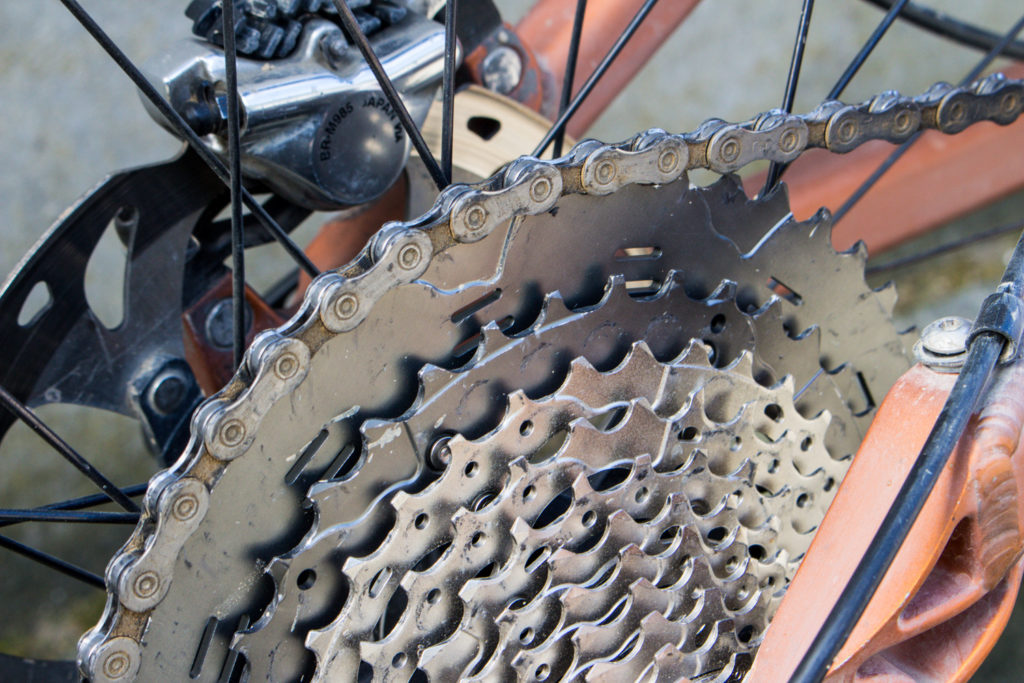 Shifting across the block is typically Shimano smooth, and the jump from the 37t to the 46t was always executed without drama, something that was seemingly the main concern of all who questioned the legitimacy of the cassette. Paired with an XT mid-cage derailleur, all it took to set up was a few turns of the B-screw and we’re away. Checking the length of your chain is recommended, especially if coming from a low cog smaller than 42; you may need to add some links… we didn’t need to and were pleased about that.
Shifting across the block is typically Shimano smooth, and the jump from the 37t to the 46t was always executed without drama, something that was seemingly the main concern of all who questioned the legitimacy of the cassette. Paired with an XT mid-cage derailleur, all it took to set up was a few turns of the B-screw and we’re away. Checking the length of your chain is recommended, especially if coming from a low cog smaller than 42; you may need to add some links… we didn’t need to and were pleased about that.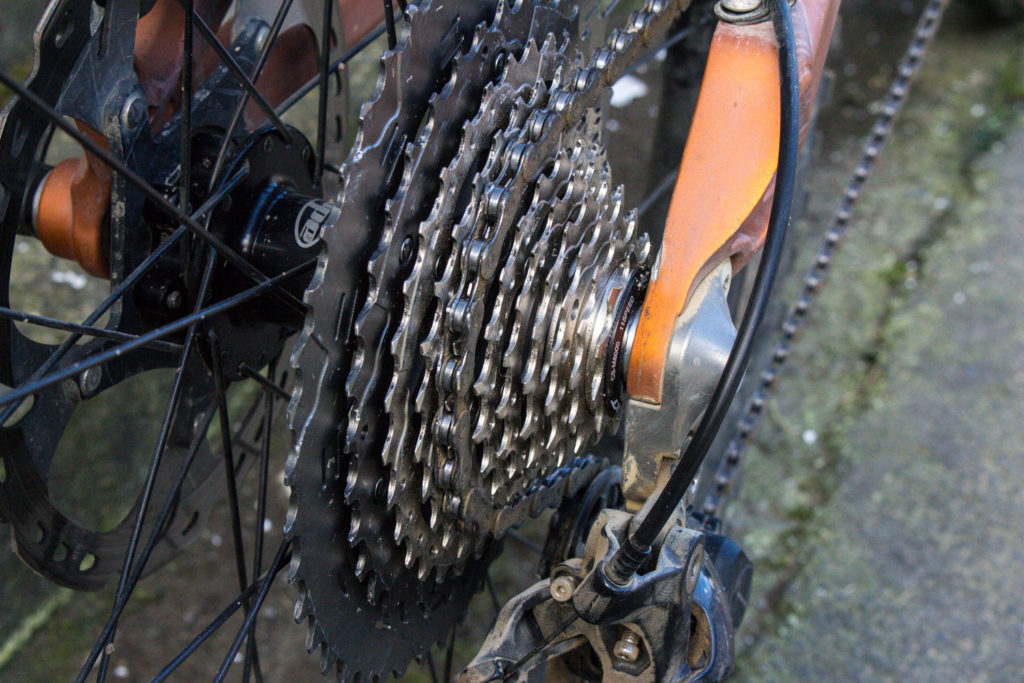 The benefit of being able to run a larger chainring may not be as important as getting the super-low climbing gear to most of us, but it is a definite added bonus for racer types who may top out on some fast trails… I can’t recall many cases of that happening, but plenty of times grovelling up a steep pitch and pushing the shifter in vain for some extra climbing relief. In that respect, the 11-46 spread does a great job of adding versatility right across the range, and that makes it a genuinely legit upgrade for existing 1x users, and should help those still unsure whether to ditch the front mech make the switch a lot easier. Like suspension, discs and dropper posts, wide-range cassettes and cogs will soon be the norm rather than the exception, and the XT’s advantages will no doubt be trickling down to the lower tiers soon, where they will be appreciated the most. I certainly did.
The benefit of being able to run a larger chainring may not be as important as getting the super-low climbing gear to most of us, but it is a definite added bonus for racer types who may top out on some fast trails… I can’t recall many cases of that happening, but plenty of times grovelling up a steep pitch and pushing the shifter in vain for some extra climbing relief. In that respect, the 11-46 spread does a great job of adding versatility right across the range, and that makes it a genuinely legit upgrade for existing 1x users, and should help those still unsure whether to ditch the front mech make the switch a lot easier. Like suspension, discs and dropper posts, wide-range cassettes and cogs will soon be the norm rather than the exception, and the XT’s advantages will no doubt be trickling down to the lower tiers soon, where they will be appreciated the most. I certainly did. 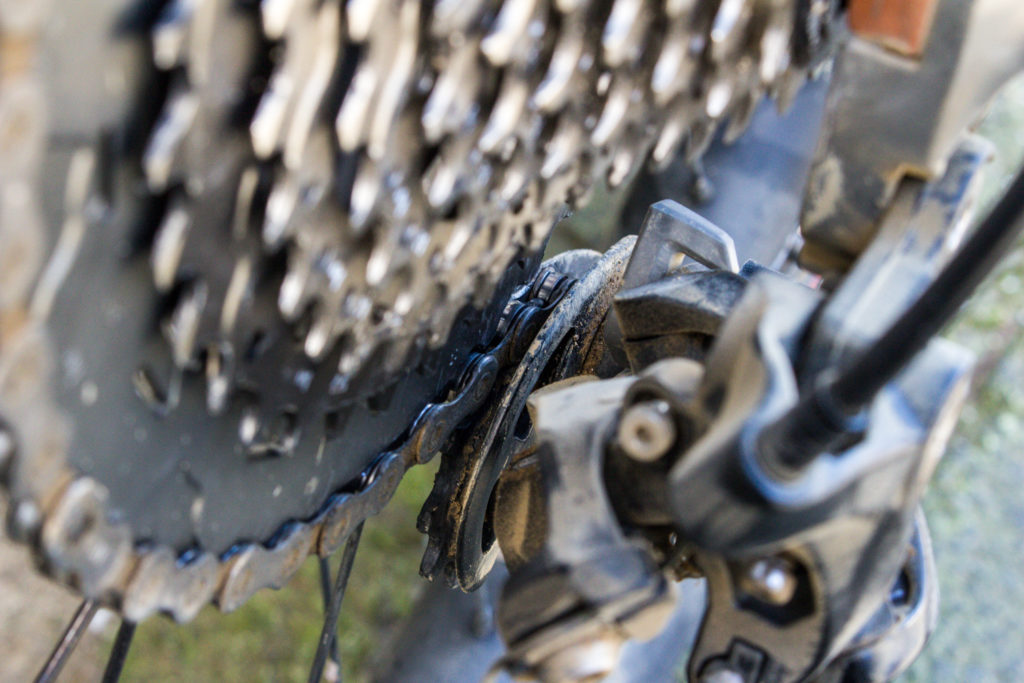



Leave a Reply